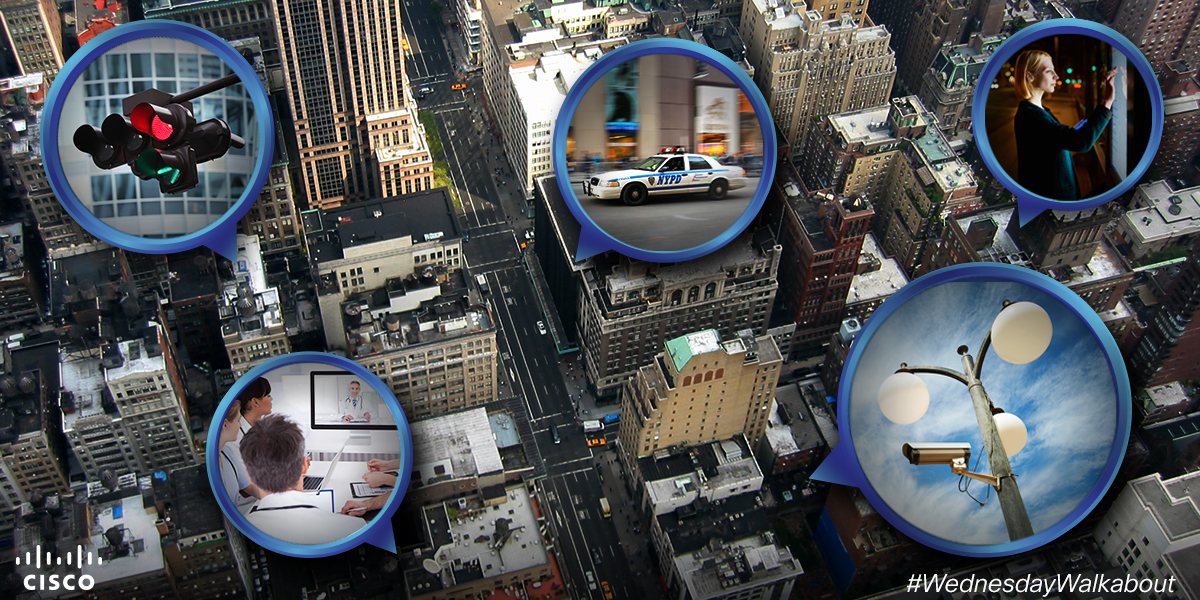Co-authored with Dani Schrakamp
Learn Without Limits
Today’s new technology trends, particularly those around digitization and the Internet of Everything, present education with an unprecedented amplifier. We now have the capacity to share knowledge to an exponentially larger number of people than ever before.
Literacy and the quest for knowledge are basic human rights that are currently unequally distributed among the world’s population. Despite global efforts, access to basic schooling and life-long learning is still far from a reality for many in today’s environment. And a lack of foundational education hinders economic prosperity, perpetuating levels of poverty in the world’s poorest societies. However, the digital age is shining new hope. Technology advancements offer significant opportunities to improve access to learning and opportunities to address the learning disparities in underserved populations, encouraging the movement toward wider education equity. Not only is technology closing the knowledge gap, but it is also providing new and innovative ways to teach and to learn. In complementing traditional methods, technology can truly be a value-add on how you provide and absorb knowledge.
https://www.youtube.com/watch?v=UVOsnat-19E
All Those in Favor of Learning Say ‘Aye’
Last week, we met brave ten-year-old Thorben, who is battling cancer. The Internet of Everything is connecting Thorben to his classmates in a way that is as close as possible to being there in person. For Thorben and many UKE Hamburg patients, digital technologies are creating a quality of life and reducing the feelings of isolation from normal life prior to their diagnoses.
This week, our digital citizen, like Thorben, is a child in pursuit of connecting with teachers and platforms for learning. Education is the foundation of any modern society; and in today’s post, we’ll explore how digital learning is an evolutionary step in education.
For our citizen, like many around the world, conventional classrooms can be prohibitively expensive, both to build and to attend. However, open access to improved technology is changing that and allowing for learning to be undertaken from anywhere at anytime. India’s Amrita University experienced similar challenges in educating those in remote locations. To address this, the University staff conducted both online and onsite courses, walking attendees through the same lesson plan as if the physical and digital worlds had merged into one.
Skip forward a few years and our digital citizen is struggling with balancing a job and finishing a university education. However, like in what San Jose State University (SJSU) is calling the “next-generation classroom”, many learning institutions are removing th e need to attend a course in person, eliminating travel time and costs. Immersive video lecture systems allow universities like SJSU educators to exchange teaching opportunities with students and visiting lecturers around the world within the classroom. Participants can see and hear one another, and participate live in the education process regardless of location.
e need to attend a course in person, eliminating travel time and costs. Immersive video lecture systems allow universities like SJSU educators to exchange teaching opportunities with students and visiting lecturers around the world within the classroom. Participants can see and hear one another, and participate live in the education process regardless of location.
So what about ingenious ways of educating young minds? Our digital citizen, like so many young people, is looking for new and exciting ways to learn. Schools, like Camberwell Girls Grammar in Australia, are taking advantage of the digital movement and creating an environment for students to thrive by teaching them new skills of creativity, collaboration, and how to be innovative in their approach to learning.
Speaking of those new and innovative skills, our citizen is on the career hunt and the need for Information and Communications Technology (ICT) professionals is rapidly increasing. Workforce training programs are helping to provide unparalleled economic and societal contributions to communities and countries by having a more skilled and entrepreneurial workforce. Like Cisco’s Network Academy, which provides critical ICT education to more than 1 million students a year throughout the world – using that very technology to deliver the curriculum content.
The digital era is propelling us into a world where learning is embedded into daily life and no longer associated with traditional classrooms and school buildings. And education is on the move. The traditional model of knowledge-transfer is adapting to a collaborative, self-directed, engaging, and even customizable method that is helping to prepare students to succeed in today’s learning society.
Next Stop
Stay tuned for next Wednesday’s post. And be sure to check back each week as we explore new themes, challenges and observations.

Additionally, you can click here and register now to get your questions answered on how to become the next digital community.
Finally, we invite you to be a part of the conversation by using the hashtag #WednesdayWalkabout and by following @CiscoGovt and @CiscoEDU on Twitter. For more information and additional examples, visit our Smart+Connected Communities, Education, and our Government pages on Cisco.com. Enjoy the Wednesday walkabout!


Flipped classroom is also one of new ways of learning enabled by technology. http://www.pbs.org/newshour/bb/american-graduate-july-dec13-flipped_12-11/
Hi Ana – Thanks for your comment and the link. Love the Flipped Classroom model! It’s exciting to see how new video and collaboration tools, like Cisco WebEx and Telepresence, are helping to make this a reality.
Cisco’s Network Academy is one of the most amazing things in #EdTech today.
Meaningful IoE exposure at it’s best!
thanks for posting.
Hi Nir – I agree! @CiscoNetAcad has really helped students across the globe successfully pursue careers in #EdTech. It’s an excellent model!
ブランドコピー時計大人気を海外激安通販専門店ロレックス、ブルガリ、フランク ミュラー、シャネル、カルティエ、オメガ、IWC、ルイヴィトン、オーデマ ピゲ、ブライトリング、グッチ、エルメス、パネライ、パテックフィリップ偽物(コピー商品)のブランドの腕時計の販売、通販。 http://www.gowatchs.com/brand-208.html
高品質2015シャネル スーパーコピー激安專門店弊社は海外大好評を博くシャネル コピー激安老舗です,2015高品質シャネル バッグ コピー,シャネル 靴 コピー,シャネル 財布 コピー品の品質はよくて、激安の大特価でご提供します。 http://www.newkakaku.net/boq1.htm
100%実物写真ですし、品質が完璧です!”スーパーコピーブランド財布激安 偽物財布激安コピー ルイヴィトン財布偽物,偽物財布コピーエルバーキンコピースーパーコピー財布ブランド財布コピーブランドコピー激安バレンシアガ スーパーコピー激安ロレックス スーパーコピー時計ブランド財布激安 偽物財布激安コピー ルイヴィトン財布偽物,偽物財布コピーブランド激安市場-jck35販売:ブランド財布コピー,激安ブランド,財布コピー,偽ブランド,偽 ブランド財布,偽物ブランド財布,ブランドコピー,ヴィトンコピー,ルイヴィトン財布偽物, シャネル財布コピー,グッチ財布コピー,エルメス財布偽物,D&G 財布コピー,ボッテガ 財布 .2013年新作スーパーコピーロレックス,スーパーコピーロレックス時計通販スーパー コピー品その他の世界一流ロレックススーパーコピー時計品を扱っています。 ホームページをクリックして商品をご覧下さい.ロレックスコピー,業界No.1人気スーパーコピーロレックス腕時計専門販売ロレックスコピー(ROLEXスーパーコピー)のロレックス レプリカ販売専門店です。すべての商品は品質2年無料保証です,ロレックス デイトジャスト 偽物,人気満点ロレックス コピーn級品新作大特集 http://www.bagkakaku.com/celine_bag.html
2015年の新素材-新作!高品質 腕時計高品質の追求 超N品を良心価格で提供詳しくは以下のようなブランドがあります。HERMES(バッグ、財布、時計) CHANEL(バッグ、財布、時計)LOUIS VUITTON(バッグ、小物、財布、時計) BVLGARI(財布、時計)Christian Dior(バッグ、財布) COACH(バッグ、財布)GUCCI(バッグ、財布) ROLEX(時計)OMEGA(時計) IWC(時計)FRANCK MULLER(時計) HUBLOT(時計)クロエ CHLOE バッグなどです。ご不明点が ございましたらお気軽にお問い合わせください http://www.okakaku.com/brand-2-copy-0.html
ブランド激安市場コピーブランドコピー,スーパーレプリカ,ブランド激安市場 女社長 激安 シャネル 財布(CHANEL),グッチ 財布 (GUCCI) 激安,ヴィトン(lv) 新作 財布 激安 ルイヴィトン財布コピー,新作 ブランブランドを特別価格で提供中!ルイヴィトン財布、ルイヴィトンバッグ、ルイヴィトンベルトブランド激安市場ブランドコピー,大人気のルイヴィトン,スーパーコピー,様々な高品質ーパーコピー時計,ブルイヴィトン コピー ブランドレプリカ 激安 ブランド激安市場 ロレックス コピー スーパーコピー ルイヴィトン、シャネル、グッチ、エルメス、クロエ、ブラダ、ブルガリ ドルチェ&ガッバ―ナ、バレンシアガ、ボッテガ.ヴェネタ偽物ロレックス、ブルガリ、フランク ミュラー、シャネル、カルティエ、オメガ、IWC、ルイヴィトン、オーデマ ピゲ、ブライトリング、 http://www.bestevance.com/Hermes-1/index.htm
高品質2015シャネル スーパーコピー激安專門店弊社は海外大好評を博くシャネル コピー激安老舗です,2015高品質シャネル バッグ コピー,シャネル 靴 コピー,シャネル 財布 コピー品の品質はよくて、激安の大特価でご提供します。 http://www.gginza.com/wallet/chanel/index.html
業界最高峰のブランドコピー 激安、コピーブランド、スーパーコピーブランド(N級品)通販専門店!ブランドコピー,コピーブランド,スーパーコピーブランド,ブランドコピー 激安,偽物ブランド、偽物のバッグ、腕時計、財布など激安で買える!全部のスーパーコピー販売品物のなかで私達のブランド激安が一番有名です http://www.okakaku.com/brand-2-copy-0.html
人気スーパーコピーブランド時計激安通販専門店私達は長年の実体商店の販売経験を持って、先進とプロの技術を持って、高品質のスーパーコピー時計づくりに 取り組んでいます。最高品質のロレックス時計コピー、カルティエ時計コピー、IWC時計コピー、ブライトリング時計コピー、パネライ時計コピー激安販売中商品の数量は多い、品質はよい。海外直営店直接買い付け!★ 2015年注文割引開催中,全部の商品割引10% ★ 在庫情報随時更新! ★ 実物写真、付属品を完備する。 ★ 100%を厳守する。 ★ 送料は無料です(日本全国)!★ お客さんたちも大好評です★ 経営方針: 品質を重視、納期も厳守、信用第一!税関の没収する商品は再度無料にして発送します http://www.msnbrand.com/brand-copy-IP-20.html
スーパーコピーブランド格安販売店はこちらへ!品々の激安価格に持ったスーパーコピーブランド 代引きの新作はお客様に提供されます。安心、迅速、確実、お客様の手元にお届け致します。★弊社は9年の豊富な経験と実績を持っております。★一流の素材を選択し、精巧な作り方でまるで本物のようなな製品を造ります。★品質を重視、納期も厳守、お客様第一主義を貫きは当社の方針です。★驚きの低価格で商品をお客様に提供致します!★早速に購入へようこそ! http://www.ooobag.com/index.html
弊社は海外安心と信頼のプラダ 時計 コピーです。2015 新作が満載!皆様を歓迎して当店をご光臨賜ります。ロレックス時計コピー,パネライ時計コピー,ウブロ時計コピー ,ブライトリング時計コピー,IWC時計コピー,フランクミュラー時 計コピー,ショパール時計コピー,フェラーリ時計コピー,グラハム 時計コピー,ハリー ウィンストン時計コピー等。サイトは世界一流ブランド コピー 専門店です。ぜひ一度当店の商品をお試しください。驚きと満足を保証致します。ご利用をお待ちしております。 http://www.ooobrand.com/bags/chanel/index.html